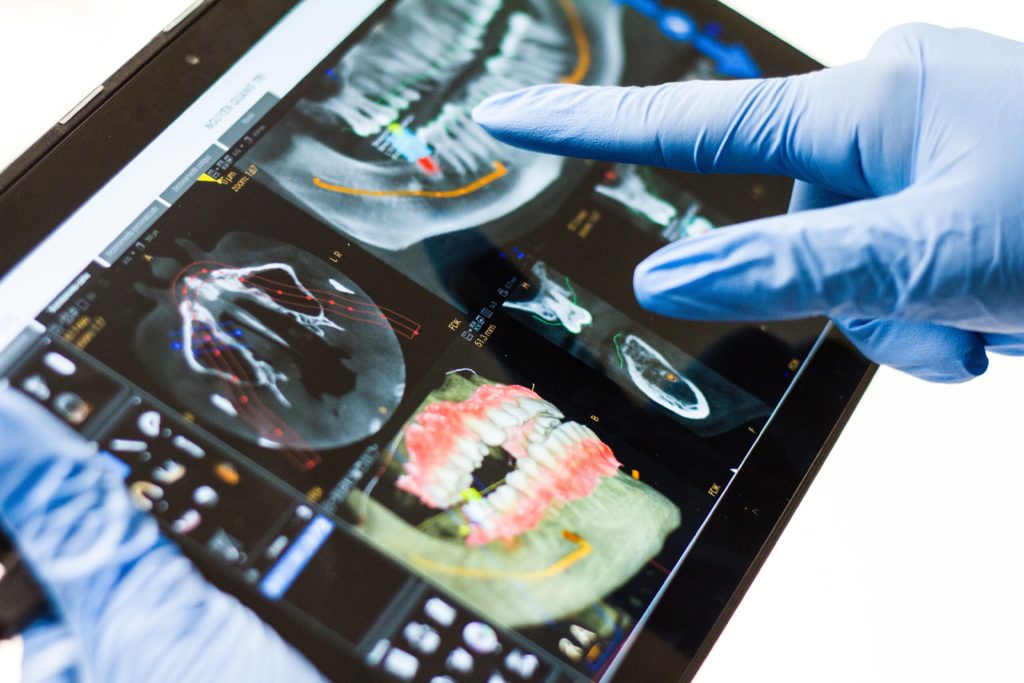An interesting artice titled “Patient shielding during dentomaxillofacial radiography,” written by Erika Benavides and et. al. appears in the Journal of the American Dental Association (vol. 154, no. 9, pp. 826-835, 2023). The article discusses the American Academy of Oral and Maxillofacial Radiology updated evidence-based recommendations and clinical guidance for patient contact shielding during dental x-rays.
Types of dental x-rys include intraoral, panoramic, cephalometric, and cone-beam computed tomographic (CBCT) imaging and even in some cases multidetector computed tomography (CT), to evaluate the jaws and soft tissues. Dentists attempt to perform imaging techniques while minimizing patient radiation dose and offering the diagnostic views. Any benefits from imaging must outweigh any potential radiation risks. Shielding is a common practice reduce radiation exposure to sensitive tissue. Gonadal shielding is a long-standing practice during imaging that aims to reduce the risk of radiation-induced hereditary effects, and it is required by law in some states in the U.S. Thyroid shielding seeks to reduce potential risk of radiation-induced thyroid cancer.
The American Academy of Oral and Maxillofacial Radiology established an ad hoc
committee to come up with evidence-based recommendations and clinical guidance for the use of patient contact shielding during dentomaxillofacial imaging. The committee reviewed literature and reports from radiation protection organizations and studies that reported radiation dose to gonads, breasts, and the thyroid gland. Based on the review the committee decided it was no longer necessary to shield reproductive organs and fetuses during intraoral, panoramic, cephalometric, and CBCT imaging. The committe found that there was a lack of radiation-caused hereditary effects in humans, and that the doses duringal dental imaging for hereditary effectsis of negligible doses. The committee found thyroid shielding should no longer be used during intraoral, panoramic, cephalometric, and CBCT imaging considering as intraoral radiography has negligible effects on thyroid carcinogenesis.

Photo by Quang Tri NGUYEN on Unsplash
The recommedations of discontinuing shielding of the gonads, pelvic structures, and fetuses, and thyroid during all dentomaxillofacial radiographic imaging procedures is counter to long established beliefs and practices. The authors feel that these recomendations may be a hard sell for pregnant, pediatric, and apprehensive patients. The authors state:
“As necessary, federal, state, and local regulations and guidance should be revised to remove any actual or implied requirement for routine thyroid shielding for intraoral, panoramic, cephalometric, and CBCT images.”
It remains to be seen how long the new recommendations take to rollout to dental practices and patients are comfortable with them.
